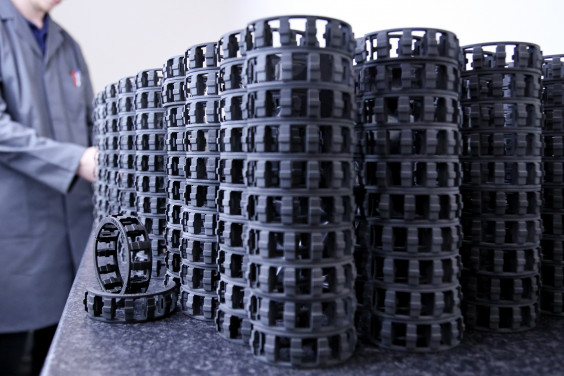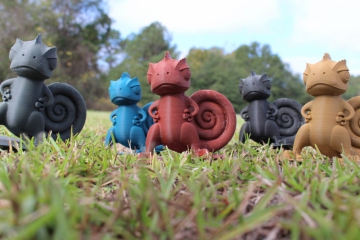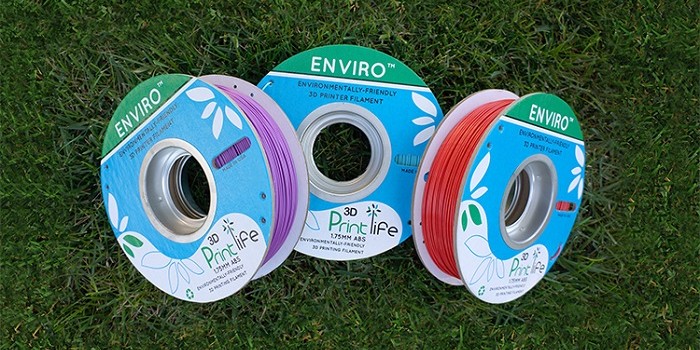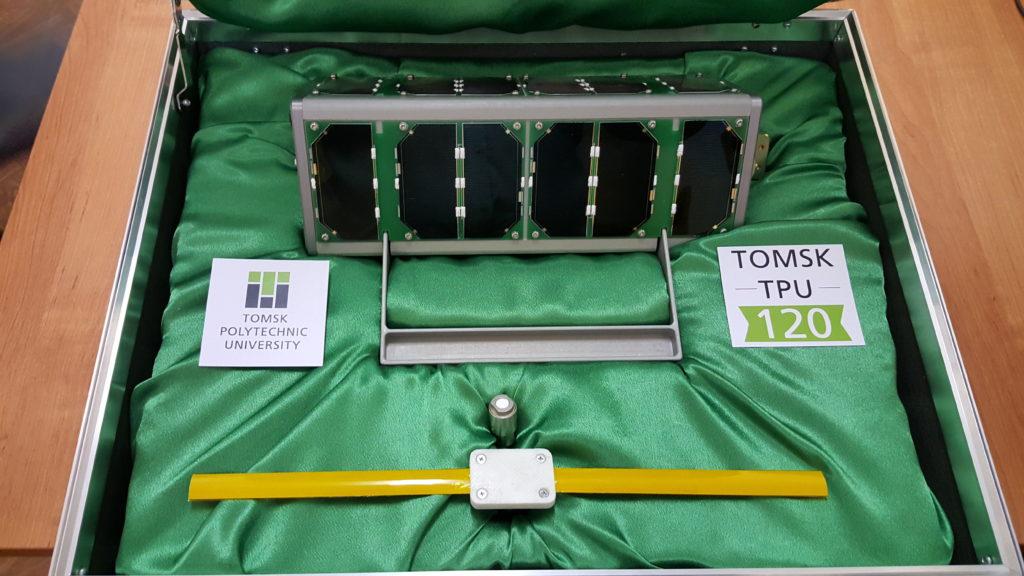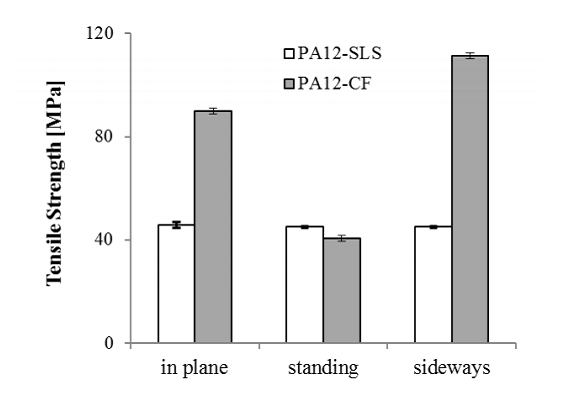Historically, quality, cost and delivery have been the primary drivers for decision making within manufacturing. Today, another word is on the minds of executives: Sustainability.
Sustainability is increasingly important in consumer decision making, with younger consumers flocking to brand that are “greener” than their competition. Sustainability initiatives can blunt the effects of fluctuations in energy prices and availability of material resources. And tracking to sustainability KPIs enables companies to get ahead of regulation that will penalize their carbon footprints. Regardless of your sector, sustainability must be a core part of your business.
A common claim is that 3D printing enables a more sustainable supply chain: By enabling manufacturing at the point of use, 3D printing reduces the carbon footprint that would naturally occur due to part transportation. 3D printing is a low-waste process, requiring less raw material compared to subtractive manufacturing methods. A search of the literature has produced a limited number of studies accounting for the entire life cycle of 3D printed parts.
So, we actually tested this theory: we compared the life cycle of a mass manufactured injection molded part produced in China and a locally 3D-printed part.
Experiment Methodology
Using a generic car mobile phone holder as a case study, we developed a methodology to compare the carbon footprints of centralized and distributed manufacturing for cheap, mass-produced products.
We purchased a phone holder from a supplier in China through Amazon and analyzed the entire supply chain, from processing the polymer pellets in the injection molding machine to the part arriving at our doorstep. We also examined the entire process chain for the 3D printed counterpart, produced on a consumer 3D printer.

Figure 1: Final product (left), Injection molding components (middle) and 3D printing platform (right).
The results, as defined by the total carbon footprint, were as follows:
| Mass Manufactured (Kg CO2) | 3D Printing (Kg CO2) | |
| Material | 1.035 | 1.260 |
| Manufacturing | 0.150 | 0.480 |
| Transport | 0.017 | 0.001 |
| Life Usage | 0.180 | 0.200 |
| Total | 1.382 | 1.941 |
While 3D printing required less energy in transportation, it used much more energy in production. This result is typical: Often, 3D printing machines require 10x the energy to process 1KG of material compared to injection molding and 100x compared to CNC machining.
A casual observer might note from the images above that the 3D-printed part required printing additional material that does not end up in the final part. These “support structures” are often a necessary part of the 3D printing process. Build errors can also be common (especially in consumer-level 3D printers) and our analysis takes that into account. With experience in 3D printing, both support structures and build risk can be reduced, but not eliminated entirely.
Reviewing the results of the carbon footprint during the transportation phase, the mass manufactured part travelled from a port in China to our location, while the 3D printed part travelled minimally (i.e. ABS from the factory to our office,) resulting in a significant difference.
Finally, the actual life usage carbon foot print was relatively similar between the two (50 vs 54g, respectively), simply because the weight of each part was within a margin of error.
So, 3D printing is not sustainable?
Clearly, the widely-accepted talking point that 3D printing is inherently more sustainable than traditional manufacturing is false. As we showed with the phone holder, often mass manufacturing is both more economically viable and more sustainable, especially for parts that require large volumes and can be produced by traditional manufacturing.
Our example exposes a wider problem with how engineers and organizations think about adopting new technologies. In our experiment, we took a common, mass-produced part that was designed for injection molding, “hit print” and analyzed the results. In an effort to show a relatable use case, we simplified too much, but in doing so we demonstrated a larger, more important point: 3D printing isn’t a drop-in replacement for traditional manufacturing, but we often treat it that way because we don’t know any better.
We’d go even further to say that, if you’re not planning on taking advantage of specific capabilities of 3D printing, you shouldn’t bother; 3D printing very rarely provides advantages as a drop-in replacement to traditional manufacturing.
If 3D printing isn’t a drop-in replacement, how do we start using it in ways that make sense? Using 3D printing to drive sustainability requires understanding what these tools can do, how to best deploy them, and where they can fill in the holes in your business model. We need to start Thinking AdditivelyTM.
First, consider the design freedoms available with 3D printing. Utilize the design freedoms of additive to optimize the part, whilst maintaining structural requirements and achieving an acceptable cost. By Thinking Additively, designers can unlock three primary benefits:
- Less Material – Less raw material is needed to create the part and build support structures. The less material needed, the lower the fossil fuel consumption and associated energy.
- Less Processing – Less material handling and post-processing directly correlates to less energy required to print the part.
- Less Weight – Lighter weight parts directly reduce greenhouse gas emissions both during transportation and life usage.
In our case, after redesigning the phone holder, we found we could reduce the weight from 54g to 32g, resulting in a 40% carbon footprint reduction, or 15% lower carbon footprint than injection molding.
Second, explore what additive can do for the way you design and develop products. Thinking about additive as a drop-in replacement gets us prototypes, but truly Thinking Additively opens up many more possibilities to both iterate internally faster and to bring customers into the design process.
In traditional manufacturing, once design is finalized, tooling is created, production begins at scale, and iterating becomes vastly more expensive; any change can mean scrapping and recreating tooling, discarding thousands of already-produced pieces, or re-stocking warehouses across the globe.
Your early adopter customers are often the most critical, but also the most invested in your product, yet using traditional manufacturing means that the waste inherent in change grows exponentially just before you have access to the truest feedback on your product. This is not the case with additive; as lower economic production quantities mean that you can pivot quickly, with reduced waste.
Finally, start Thinking Additively about your business model. Additive can improve the sustainability of the entire lifecycle of your product. Some additional green aspects of 3D printing may include:
- Reduced Inventory: While we have explained the financial benefits of spare parts, by not having warehouses full of inventory saves on raw material usage, storage energy and arguably saving on throwing away parts after sitting on shelves for years.
- Material Processing: The arrival of global materials manufacturers in the 3D printing space (e.g. Solvay, BASF) will likely make material processing more efficient due to economies of scale.
- Product Efficiency: The benefit doesn’t stop once the part is manufactured. Improving efficiency can make processes more sustainable (e.g. improved fuel nozzle designs equate to improved fuel efficiencies). Moreover, thanks to design freedoms, assembly can be manufactured with single parts in the same material making the product more recyclable.
- Repair and Refurbishment: Because 3D printing works by adding material on top of a layer, it is well suited for repairing components. Parts can be fixed by adding material where needed; previously disposable parts can be economically repairable.
- Waste into production materials: Because 3D printing can use recycled materials more readily than traditional manufacturing, it opens up the potential for circular economies, where waste can be reprocessed into entirely new products, such as recycling 3D printed prototypes back into feedstock for new prototypes.
In summary, 3D printing can be a green manufacturing method, but truly unlocking its potential as a sustainability enabler in your business requires Thinking Additively. As a user, you must understand when, where, and how to deploy the tool not only in product design, but throughout your product’s lifecycle. The business value of 3D printing is rarely in simply producing a cheaper part, but rather in a combination of lead time reduction, risk mitigation, and supply chain efficiencies. Similarly, with the sustainability of 3D printing, the environmental value of 3D printing is found in low volume manufacturing, reduced inventory, and reduced material waste.
The largest irony in this is that the 3D printer OEMs have a lot to learn about how the tools they created can drive sustainability within their own businesses. In many ways these companies see themselves as traditional manufacturers of industrial machinery and are consequently change-averse. Perhaps the biggest leap forward in using 3D printing as a sustainability enabler could be driven by the 3D printer OEMs themselves if they adopted sustainability as a core strategy and drove their business to sustainability KPIs. Often the best way to catalyze change is by leading by example.
Loïc Le Merlus (Manager)
Loïc focus on solving customer problems. Working closely with our clients, using data analysis, his proprietary software and algorithms, or reading research papers, he identifies the possible solutions and understand the economic impact that 3D printing and additive manufacturing could have on their businesses. Loïc has 10 years leading projects to quantify the impact of the technology, working with users and vendors across the additive manufacturing industry.
Kunal Mehta (Managing Director)
Kunal is responsible for leading the global business of Blueprint and focuses on driving adoption of 3D printing across start-ups, Fortune 500s and governments. With his extensive experience deploying numerous emerging technologies, Kunal possesses a unique perspective in helping organizations achieve high performance by designing and executing additive strategies to reshape their manufacturing processes – consistently providing customers with a differentiated, more profitable, and more satisfying experience.
[Feature image courtesy of Little Planet Factory.]
The post The Sustainability of 3D Printing: Myth or Reality? appeared first on 3DPrint.com | The Voice of 3D Printing / Additive Manufacturing.


